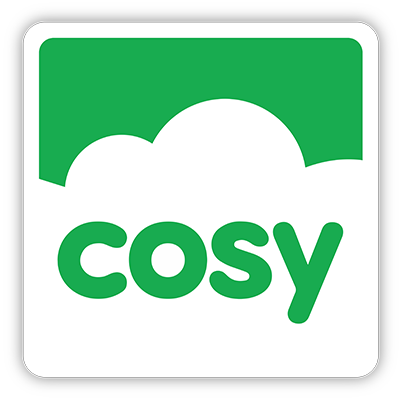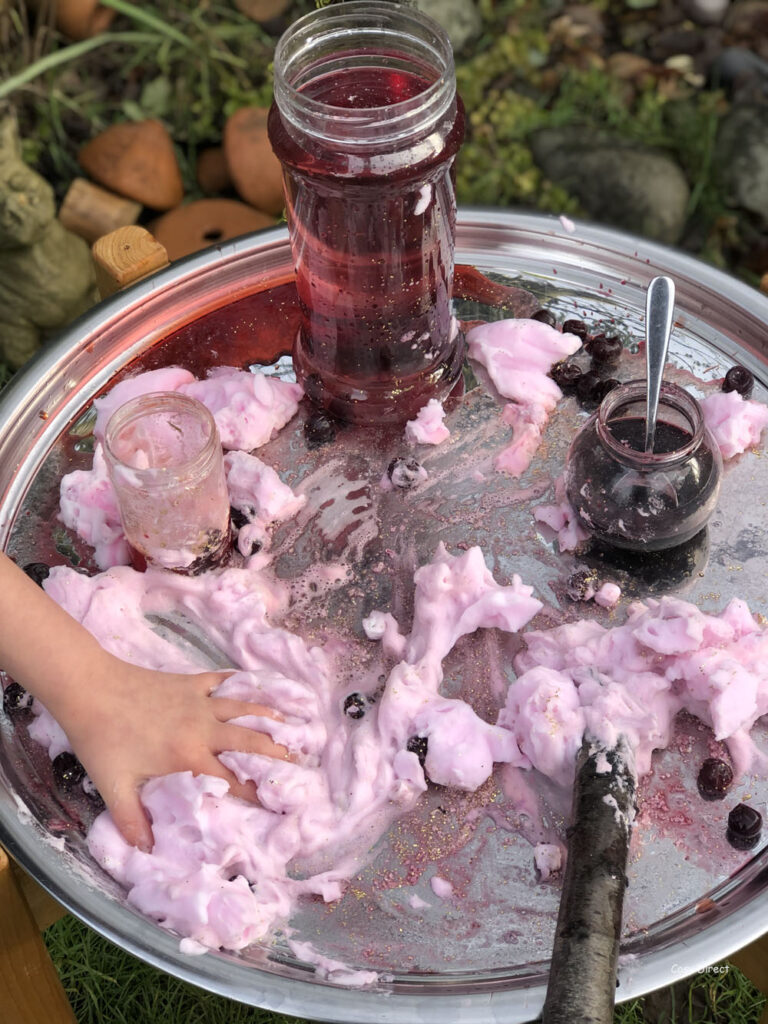Mess is Good!
Play in the Early Years Foundation Stage (EYFS) can involve mess – whether that’s mud, paint, glue or baking ingredients. Sometimes, just the term ‘mess’ and conjure up negative images of this type of play, making it seem chaotic and out of control. However, the truth is that mess can be a sensory, hands on, practical experience. It holds immense value as a vehicle for learning and development and this is a reason for us to reduce possible parental anxiety around ‘mess’. By fully understanding its impact and communicating this with families, we can make the most of the sensory experience.

A starting point is before the children even begin sessions at your setting. Communicating your ethos and approach to messy play can help avoid difficult conversations at a later date. Encourage old clothes, or clothes families don’t mind getting messy. This also puts the child more at ease as they’re not anxious about getting messy and their clothes being ruined.

It’s more than mess…
Yes, it might mean that children’s clothes get dirty. However, it’s the process that led to the mess that is of value. The sensory, manipulative aspect of the play enables children to follow their innate drive to explore and be curious, self directed learners. Through hands on experiences, they learn about the world around them – textures, properties, consistencies. It’s very much an explorative process of discovery, understanding the effect they can have on materials.
Engaging in messy play is a fantastic way to encourage language development through the senses. Children begin to link words to textures, understanding the meaning of gloopy, squelchy, squishy, slimy etc. With these words in their vocabulary, they can be used correctly in play at a future date, adding to the child’s knowledge bank.

Physical skills can also be developed through messy play activities. The use of fingers builds strength and dexterity in the small muscles needed to develop for writing. This is especially seen with play dough and clay where children shape, squeeze, poke, pat and knead. There’s also the understanding of how they can use their body to manipulate materials, leaving marks, changing the shape of materials and making representations. Tool use with brushes, rolling pins, spreaders etc is great for encouraging skill development and hand dominance.
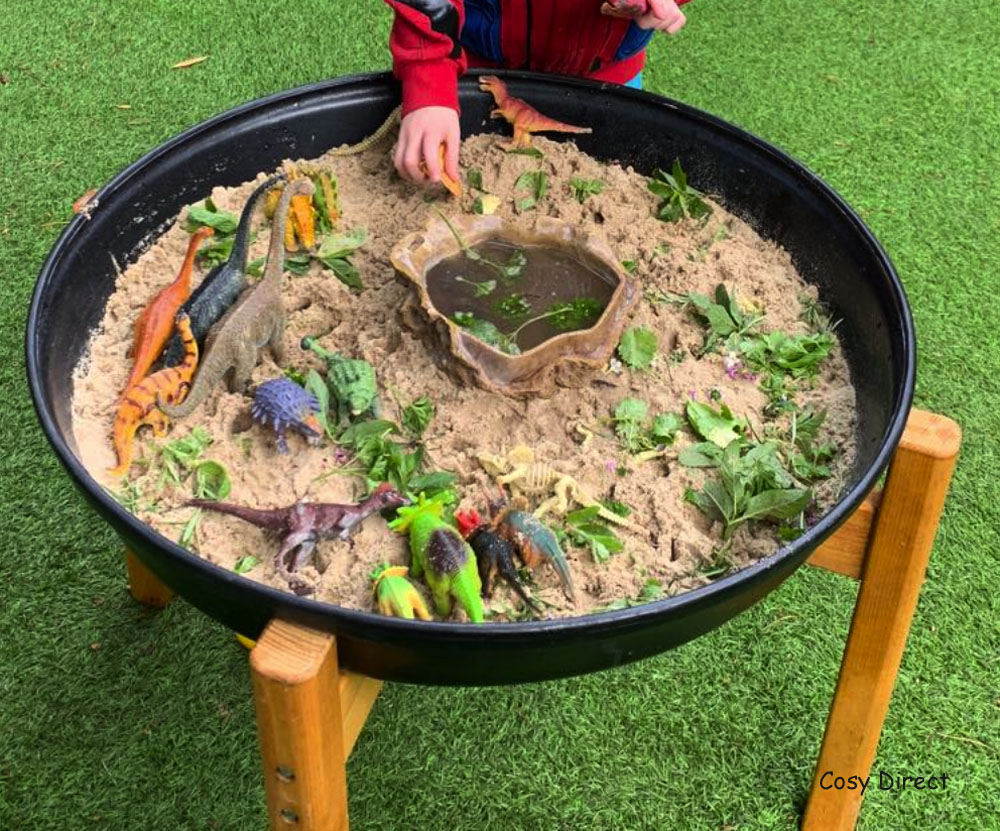
It’s not just small scale messy play that can have an impact on learning and development. Larger sale activities are particularly beneficial for gross motor skills. This type of messy play is often better off outdoors where there is space to be creative without the restrictions of the four walls of the classroom.
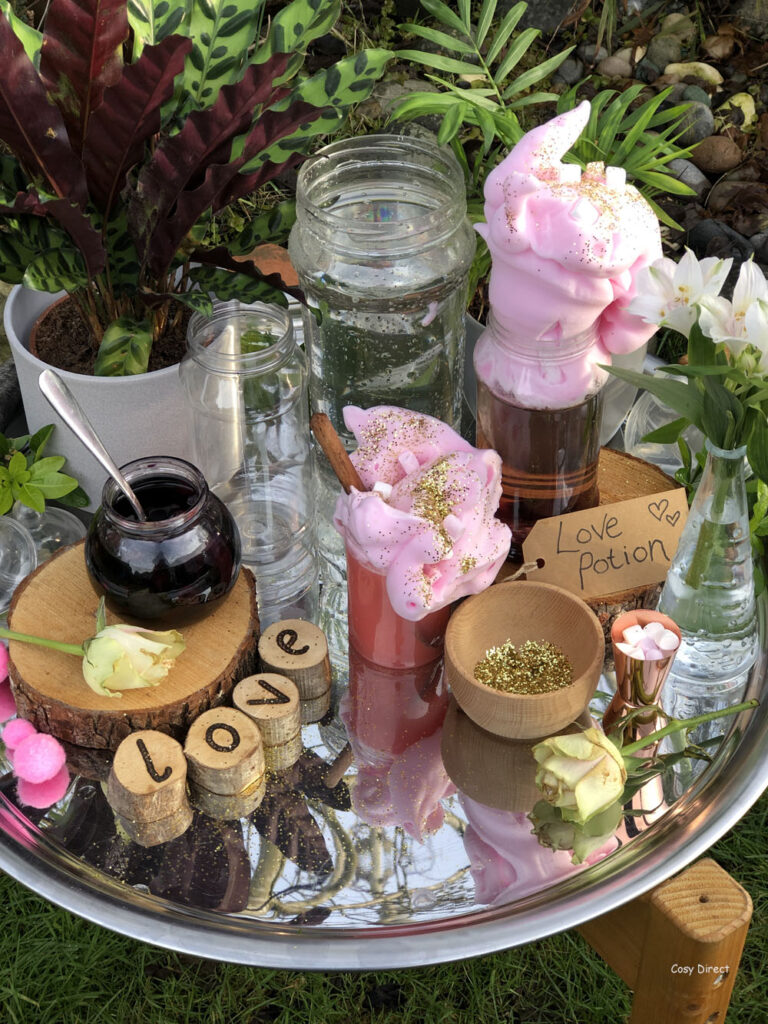
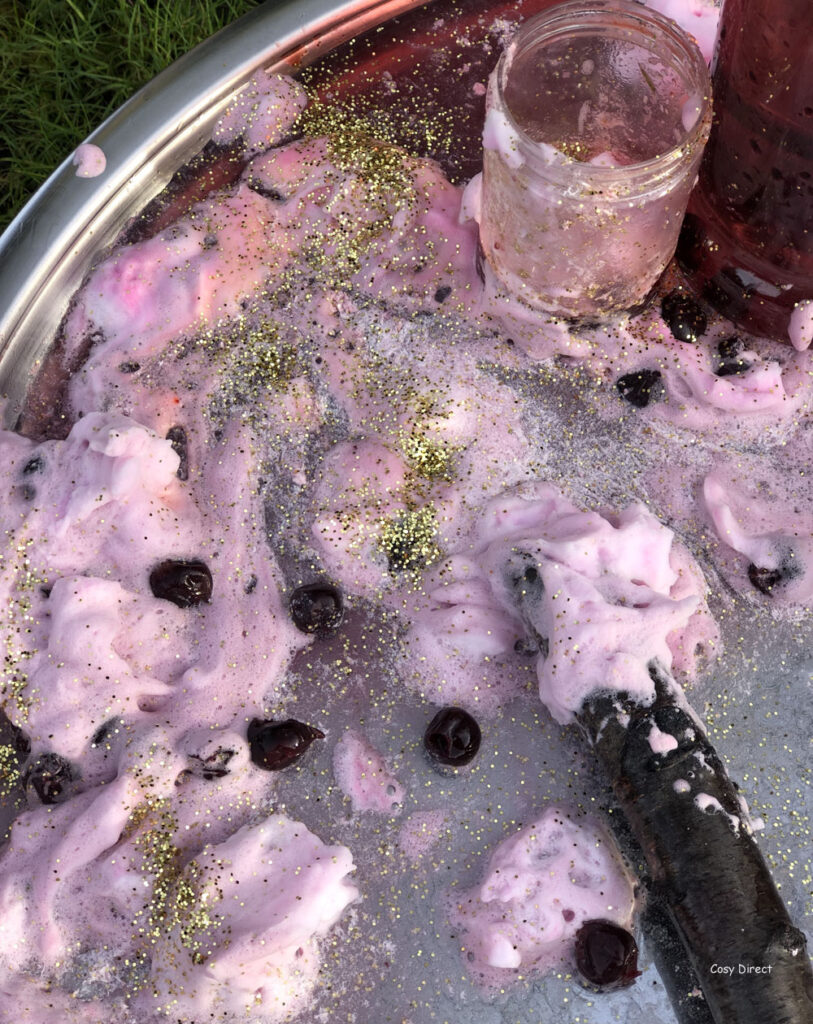

Some ideas include…
- Large scale painting – try using decorating brushes, paint on wellies, rollers, and fly swats. You can use large sheets, table clothes or shower curtains which are perfect for this. The tuff tray paper pad is perfect for big art.
- Water play – you could use tuff spots to paddle, a pool, spray bottles, a hose, pumps and buckets. Children can splash, move water, tip, pour and make patterns.
- Mud kitchen play
- Mixing powder paint and puddles
- Making giant bubbles
- Clay play
- Mud mark making
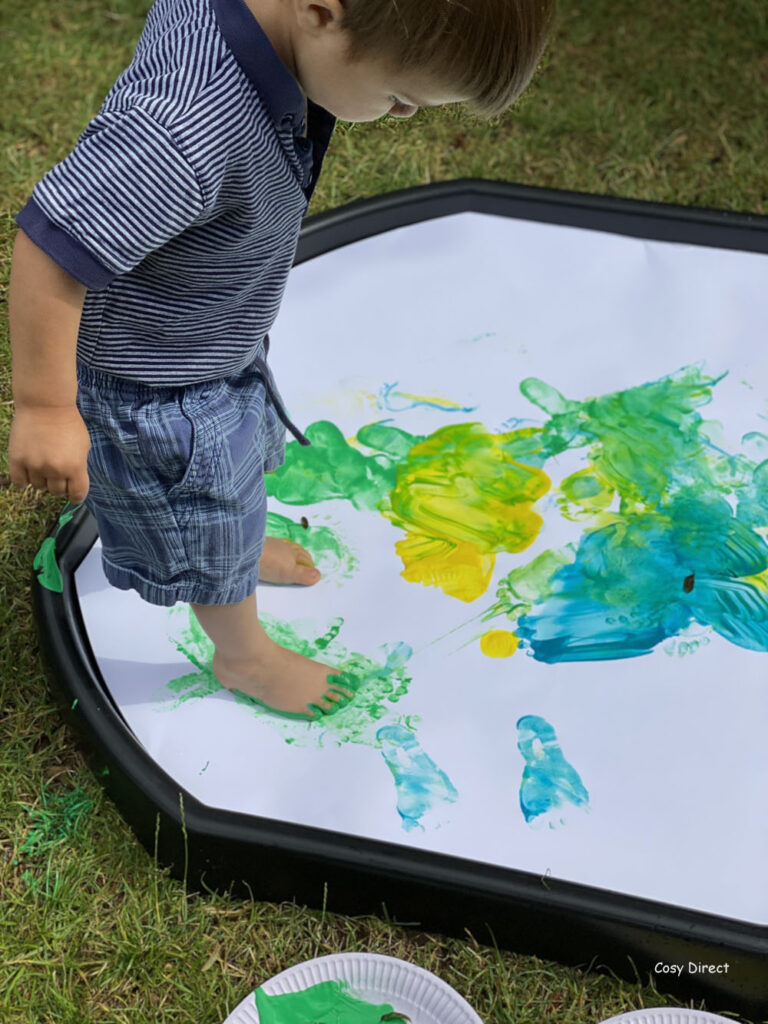
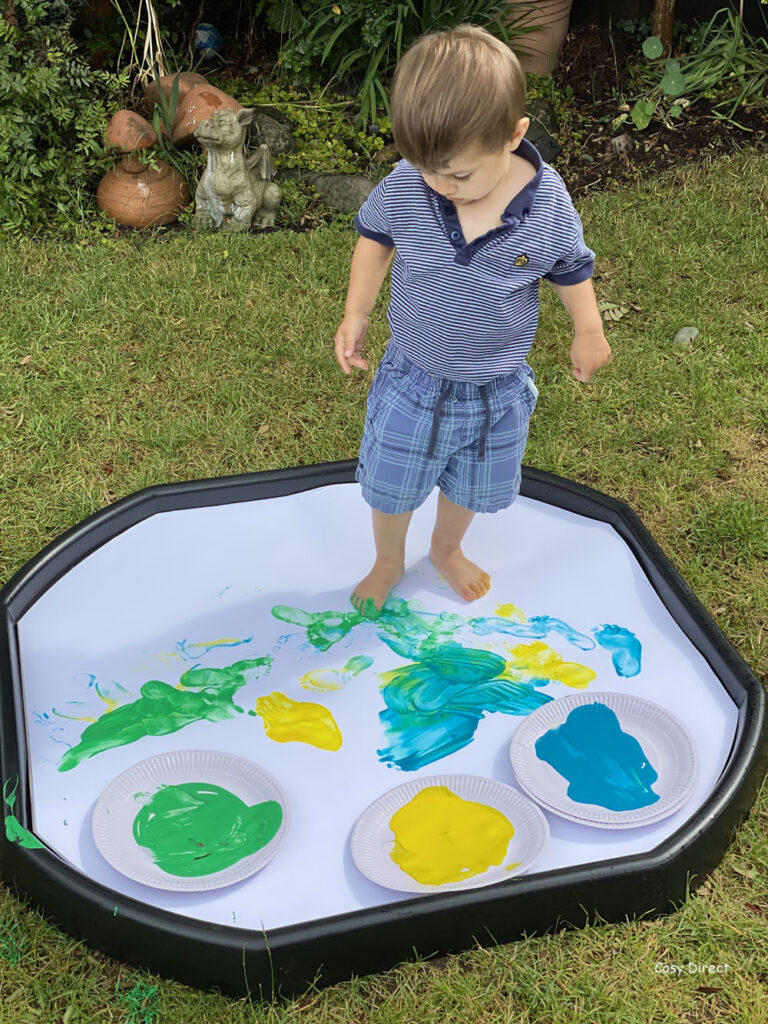
Messy play is a creative way to play and learn. It values the process rather than the product, acknowledging the learning that can occur through extended periods where children can be engaged in sensory experiences. Children are free to explore and express themselves without any pre-defined purpose.
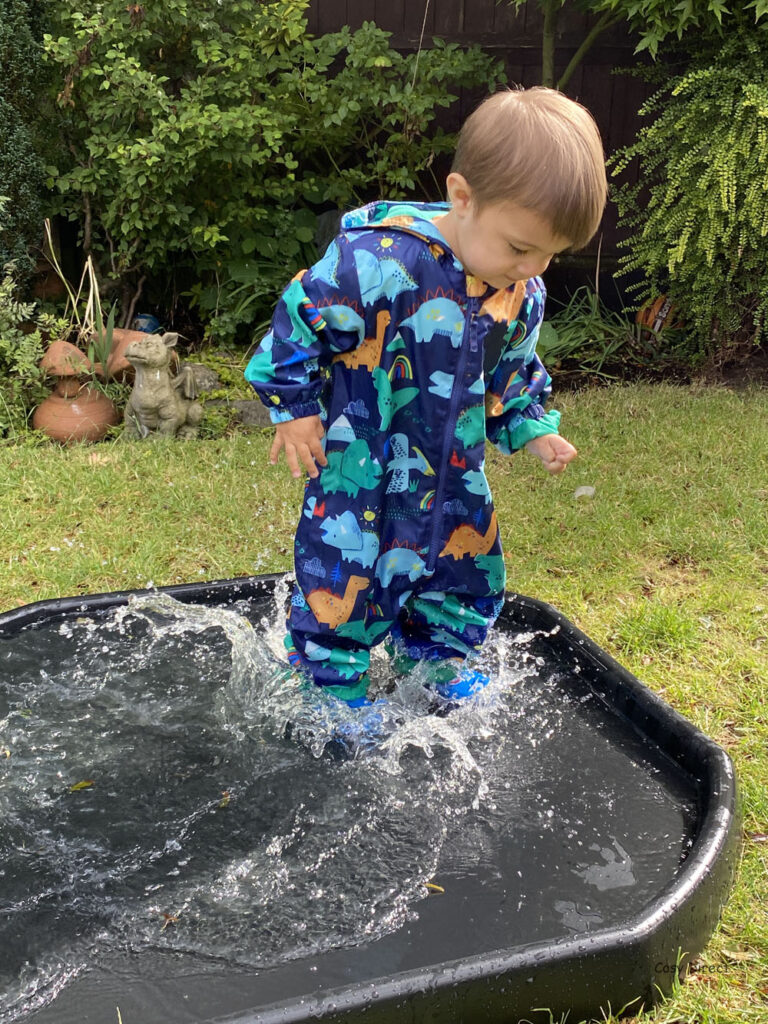
Addressing the negatives…
To fully embrace messy play as a setting requires a staff team who are on board and accepting of its value. This goes back to your setting ethos, ensuring your recruitment and induction practices help you identify individuals who fit with your provision and practices. Professional development opportunities can be beneficial in helping staff understand the impact on learning and development and also their role in scaffolding and modelling. Those who find the concept of messy play challenging may restrict not only the enjoyment but also the potential for children to develop their skills through the process. It’s important to identify issues early on and address this in staff supervisions.
There are conversations to be had around the use of food in messy play activities. It’s a subject that can often cause controversy within Early Years groups on social media. As a setting, it’s definitely worth reflecting on this as a team, critically discussing the implications versus the possible benefits.
It is important to communicate the value of your messy play activities with families. Not only does this offer ideas for home learning, but also minimises the likelihood of families being upset by messy clothes. Share your activity ideas, inform parents of the learning and enjoyment as a result of messy play and you could even consider stay and play session to showcase some of your favourite activities.
And finally…
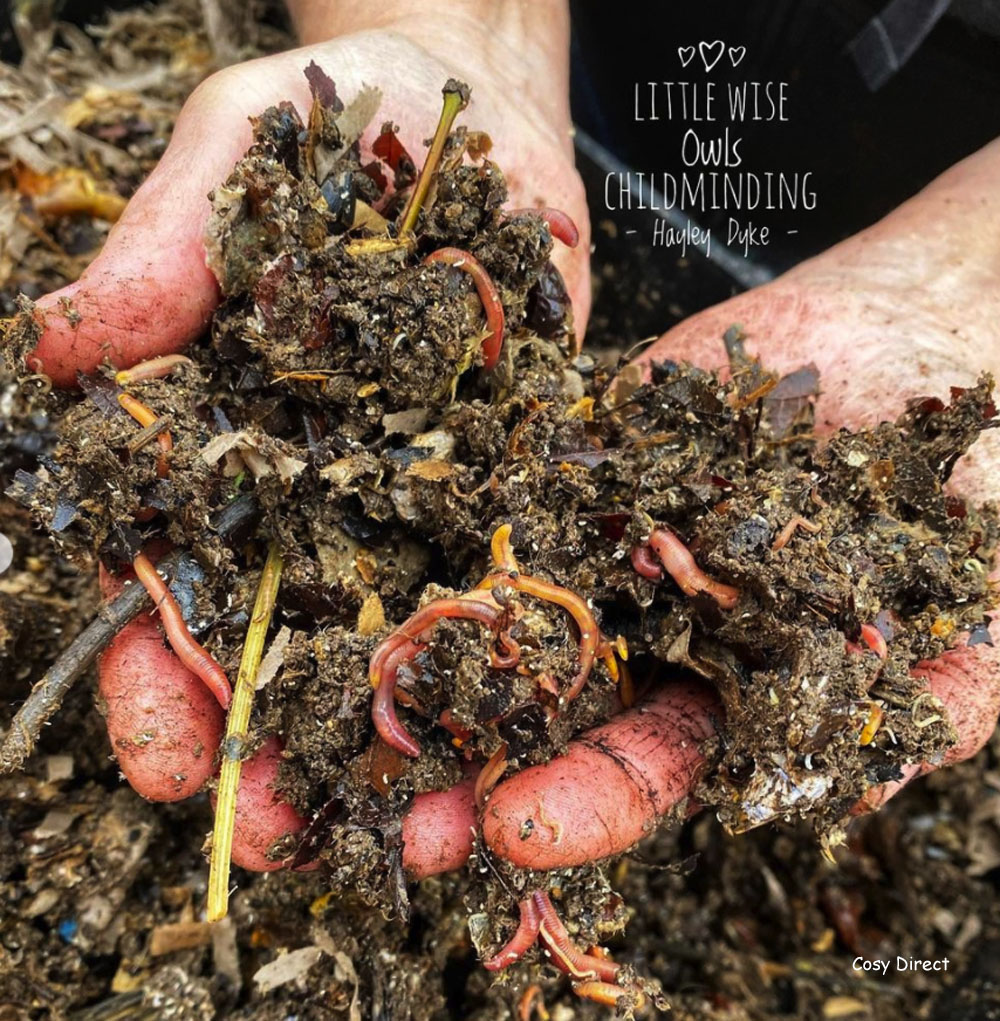
Messy play can have a huge impact on a child’s learning. However, it’s important to remember the ‘unique child’. Some children will be full of enthusiasm for getting messy and embracing the sensory experience. However, some might be more reluctant, apprehensive about getting messy. This is particularly likely if mess is discouraged at home. Our role is to facilitate quality experiences which are accessible for all, whether a child chooses to engage independently or with the support of an adult. We can empower children to become confident to ‘have a go’, to freely express themselves, bringing their own ideas to the experience. Let’s embrace the mess!
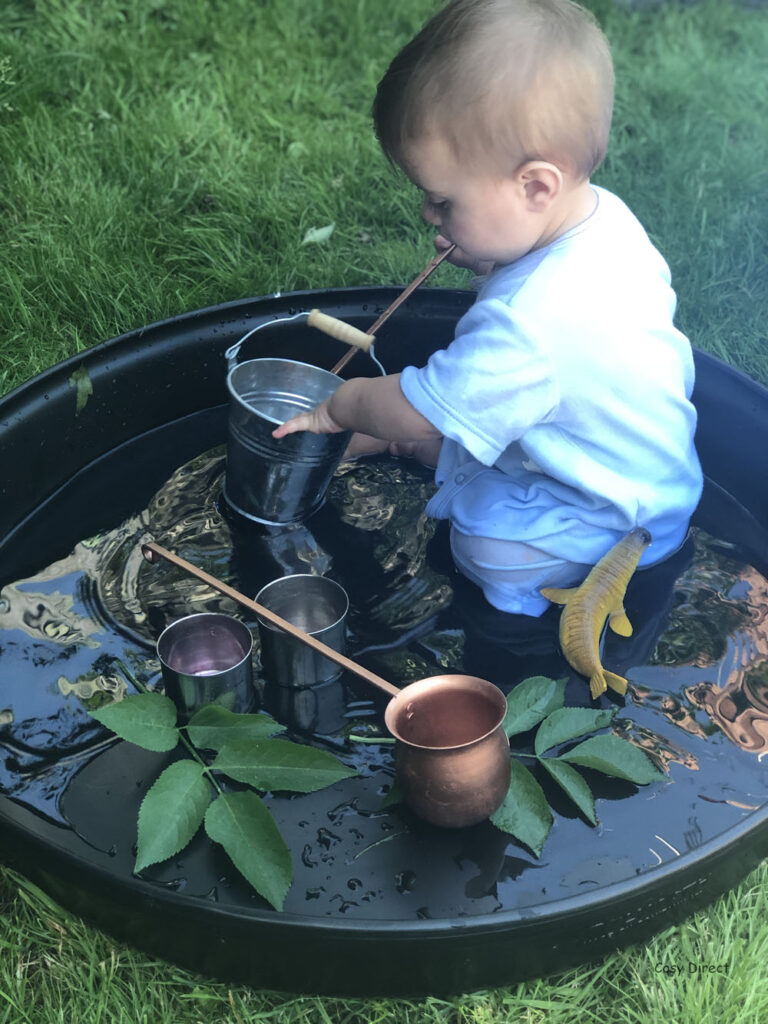
Don’t forget to share your messy, sensory experiences with us on our social media channels: @CosyDirect #CosyDirect #CosyClubIdeas
Facebook: https://www.facebook.com/cosydirect/
Twitter: https://twitter.com/cosydirect
Instagram: https://www.instagram.com/cosydirect/
With thanks to The Cosy Creatives for this blog post and our Cosy Club Members for their input.
